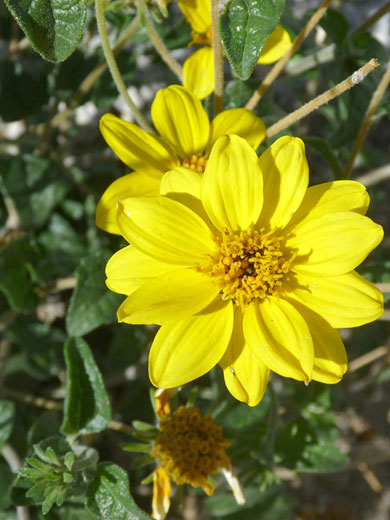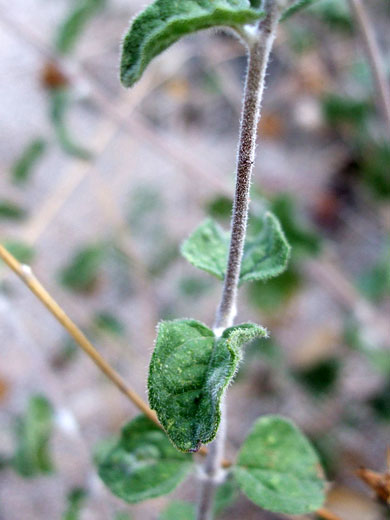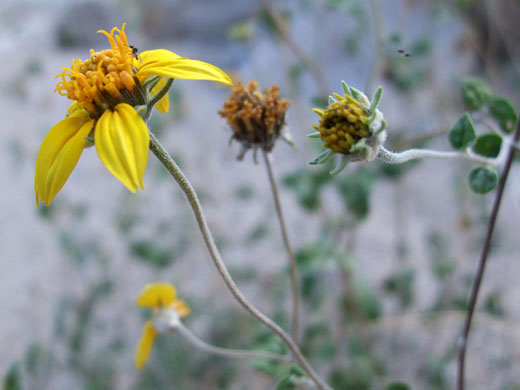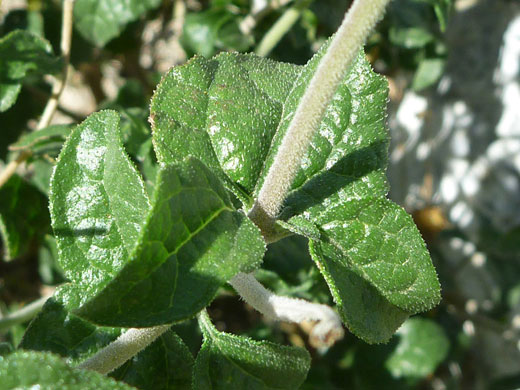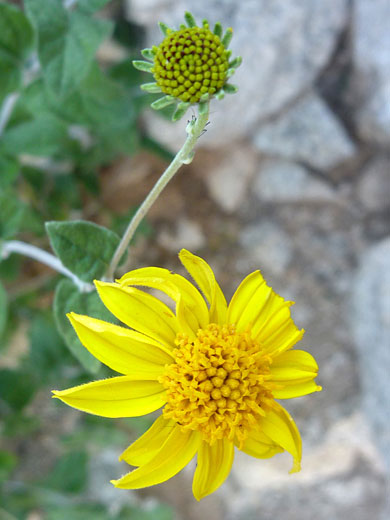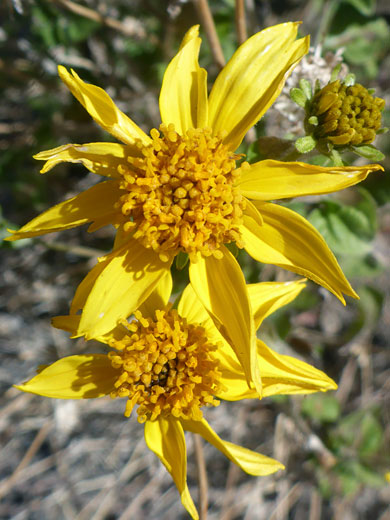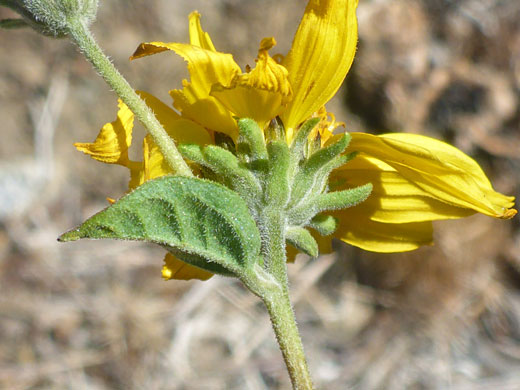Common names:
Parish goldeneye, shrubby goldeneye
Family:
Scientific name:
Bahiopsis parishii
Main flower color:
Range:
Southeast California, south Nevada, most of Arizona and southwest New Mexico
Height:
Up to 6 feet
Habitat:
Dry hillsides, washes, rocky areas; desert locations, up to 5,000 feet
Leaves:
Mostly opposite (can be alternate high on the stem), ovate to triangular, petiolate, up to 1.5 inches long
Season:
February to June
Bahiopsis parishii is a freely-branching shrub, inhabiting generally arid regions of the Southwest. The normal spring flowering season is often followed by a second blooming in early fall, following the summer monsoons. The green leaves and reddish stems have an even covering of short, rough hairs. Leaves have short stalks, shallowly lobed or toothed edges, and often a somewhat shiny surface.
Flowers are produced singly or in small, flat-topped clusters. Underneath the flowerheads are a ring of outwardly-pointing phyllaries, green with a grey hairy covering, and narrow towards the tip. Lower phyllaries are broader, and stay pressed against the involucre. Heads have between 8 and 15 ray florets, lightly hairy on the undersides, around a center of 50 or more disc florets.
Flowers are produced singly or in small, flat-topped clusters. Underneath the flowerheads are a ring of outwardly-pointing phyllaries, green with a grey hairy covering, and narrow towards the tip. Lower phyllaries are broader, and stay pressed against the involucre. Heads have between 8 and 15 ray florets, lightly hairy on the undersides, around a center of 50 or more disc florets.
All Contents © Copyright The American Southwest | Comments and Questions | Contribute | Site Map




